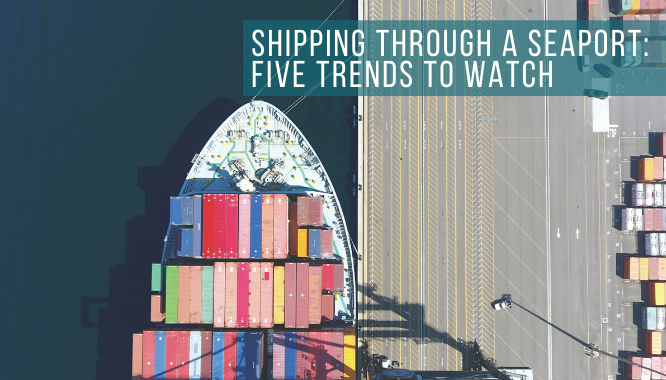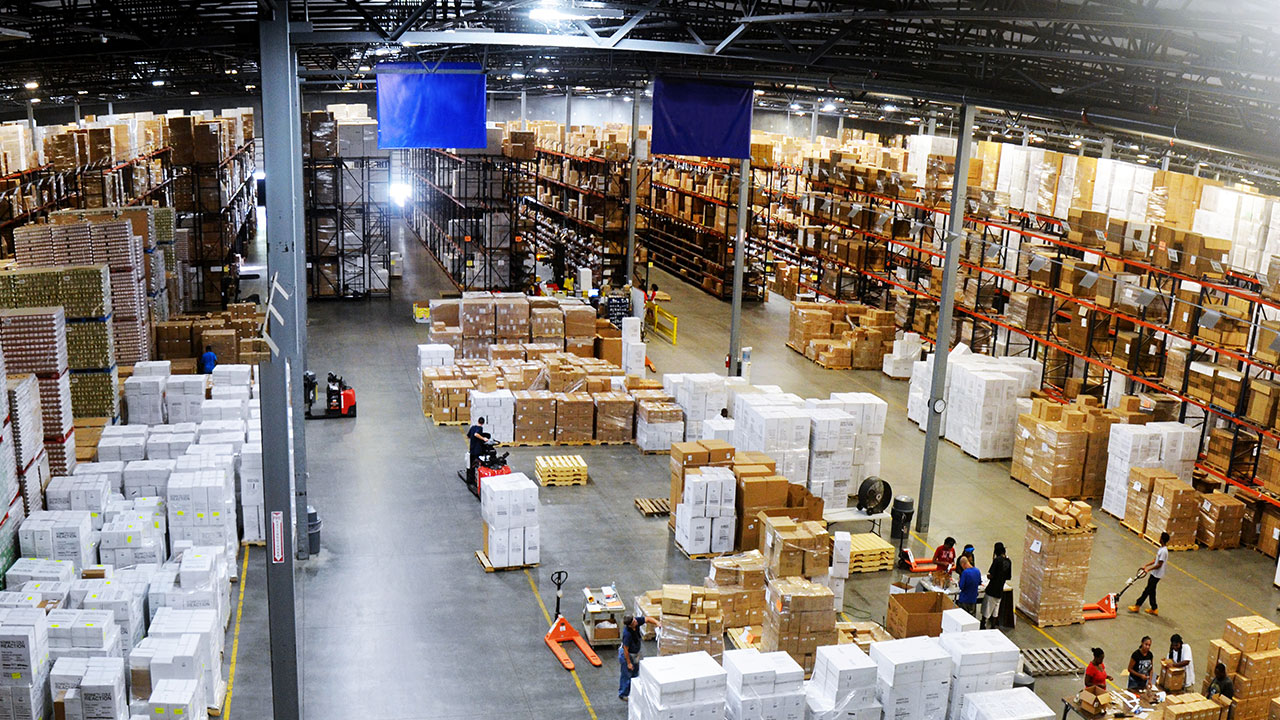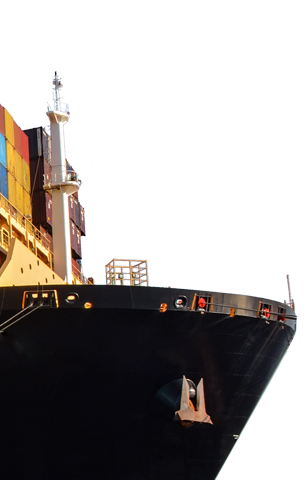Shipping Through a Seaport: Five Trends to Watch
- Home
- >
- Cargo Blog
- >
- Shipping Through a Seaport: Five Trends to Watch

From uncertainty in international trade tariffs to emerging global issues affecting the supply chain, the landscape of international trade is rapidly becoming a complex environment.

Gabriel Rodriguez is President of the Florida Customs Brokers & Forwarders Association, Inc. (FCBF), a trade association for industry professionals that serve the import and export community. He is also the President of the customs brokerage and logistics management services company A Customs Brokerage, Inc.
Rodriguez recently sat down with JAXPORT to share his insights into five trends to watch in the year ahead.
Trend 1: Increasing Technicalities
While the many codes and regulations for shippers can trip up a newcomer in particular, Rodriguez sees them becoming a bigger issue for all.
“The number one thing I see for a shipper facing issues is they didn’t do enough due diligence prior to transacting their shipment. They lack the necessary data or the right data to clear it through customs at origin or destination—which can result in a costly mess.”
With some 35 to 40 agencies involved in regulating some aspects of import and exports in the U.S. alone, “It gets extremely technical,” he said. “If you want to ship something out of the U.S. or bring something in, you’ve got to research it and engage local resources. It’s about taking that additional step to do the work on the front end to ensure you are in full compliance.”
Organizations like FCBF and U.S. Commercial Service as well as the team at JAXPORT are available to help shippers “make sure they dot all their I’s and cross their T’s.”
These sorts of pitfalls are not just an issue for novice shippers. A recent change to the standards for wood packaging materials like pallets and crates caught even seasoned professionals off guard. “The international community changed their regulations and no longer allowed non-fumigated or non-treated wood,” said Rodriguez. “It caught a lot of people off guard. Even though it’s a regulation that’s been in place for the better part of a decade, they started enforcing it.”
The impact was immediate—and costly. “No one wants to have a container worth $30,000 to $50,000 refused entry into the country and have to be returned to the country of export. Keeping up with regulations in this ever-changing world is a job in itself.”
Trend 2: Global Uncertainty
Global tariffs tension increased nearly two years ago and continue to make news. The U.S. and China are among the biggest players and while political leaders have negotiated an initial deal, tremendous uncertainty remains. Add in emerging trade deals like the passage of the U.S.-Mexico- Canada Agreement (USMCA), which replaced NAFTA, and the still-unknown impact of BREXIT, in which Great Britain has left the European Union.
“Trade negotiations, whether with China, Europe or some emerging Asian nations, are always at the forefront of what cargo owners are facing,” said Rodriguez. “Shippers may be subject to restrictions on the import or face additional tariffs on the export. That’s a huge issue.”
In addition to tariff uncertainty, the global economy is now facing impacts of COVID-19, which shut down important trade lanes from China in early 2020. The impacts trickled throughout the supply chain and are now in full effect in the U.S. Early reports say the virus began in a particularly important manufacturing and shipping zone in the People’s Republic of China.
Rodriguez is uncertain on the potential impact of the virus, likening it to a weather event that caused disruption. “Curveballs get thrown at you that force contingencies in business to ensure that, when those disruptions occur, it doesn’t bring the business to a grinding halt.”
At the time of publication, the U.S. supply chain is facing new challenges every day related to COVID-19. Ocean carriers are issuing blank sailings, some ports are facing capacity issues as containers with non-essential goods remain on terminal and trucking firms continue to work around the clock to deliver goods to store shelves. COVID-19 will surely be a topic of discussion around the industry for many months and maybe even years to come.

“Northeast Florida offers available warehouse capacity”
Trend 3: Consolidation of Carriers and Services
As major steamship carriers work together to make their shipping more efficient, “capacity is moved from trade lanes making it a little more difficult to ship as efficiently for cargo owners,” Rodriguez said.
Consolidation of services is a new trend Rodriguez says he is paying particular attention to. “The larger world carriers are jumping into the 3PL and 4PL space and doing it overtly. The larger service providers are going to be swallowing up competition whether by acquisition or defeat.”
One of Rodriguez’ major concerns in this area: the impact on small business. “As a small business, when you get into relying on those behemoth companies, you lose the personal touch. This industry is still an industry of relationships. As much as people want to automate processes, there is still the need for human contact. I don’t think that’s ever going to go away. It’s great for your large multinational companies to deal with the large carriers. Your mom and pops and your small- and medium-sized business still need a little hand-holding.”
Trend 4: Data Demands
Data-driven decisions have been around for a while, but Rodriguez believes the near future will continue to challenge and change the industry.
“Everybody is trying to get their hands on as much data as they can, integrating with their service providers and the supply chain to make sure that they’re as efficient as possible,” he said. “If you aren’t using technology and automation now, you need to get there as quickly as possible. That’s a conversation that I’m having on a daily basis, whether with the port, consignees or warehouses. Everybody is trying to integrate as fast as possible.”
The implementation of the U.S. Customs and Border Protection’s Automated Commercial
Environment (ACE) protocol is accelerating the need for technology within the supply chain. “Now that all the partnering agencies are finalizing their protocols and coming on board in an automated fashion, entities that may not have been automated are now automated.”
Rodriguez expects to see a rapid pace of change in the industry as different solutions enter the market allowing existing platforms to integrate with each other. “It’s going to move at hyper speed,” he said.
Trend 5: Unknown and Emerging Issues
With the current pace of change, Rodriguez is clear that there may be major stories developing that have not yet emerged. One area he is watching is the shift of supply chains from China to other Asian countries, as well as to South and Central America.
“That’s one of those issues that is slowly happening,” he said. “We may look up and see a huge factor that we didn’t see coming.”
With the trade negotiations and tariff restrictions with China, companies may look to move manufacturing elsewhere. It’s not a quick or easy solution. Companies that took small steps two years ago as tariffs were enacted may be capitalizing now. “Once you put something like that in motion, you’ve got to capitalize on it,” Rodriguez said. “As trade issues simmer down, that shift is still going to happen. It will be one of those underlying stories that we’ll look back on as having a huge impact.”
With so many rapidly moving pieces, it might seem logical to outsource oversight of these complex issues. Rodriguez said that cargo owners “need to get to know the business a little bit more. At the end of the day, the responsibility— legally and logically—lies with the cargo owner.”
Help is there, whether through a government agency or a trade association like FCBF. “We’re there to facilitate trade,” Rodriguez said. “The more we can do that, the better off we all are.”
Learn more about FCBF at fcbf.com.
Story by Sandy Smith
Published in the 2020 issue of JAXPORT Magazine
